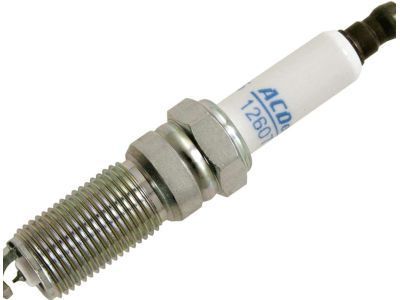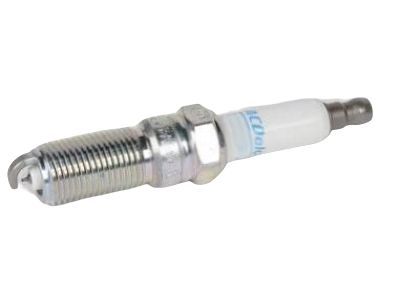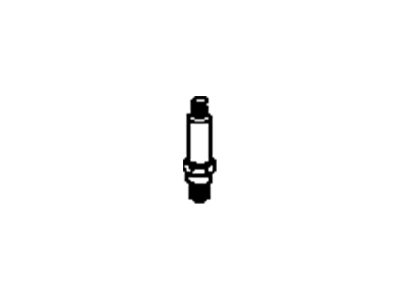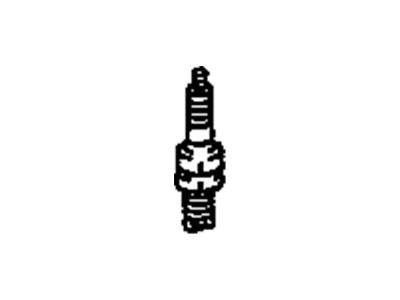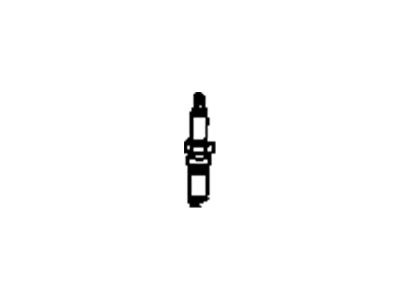
My Garage
My Account
Cart
Genuine Saturn LS Spark Plug
Ignition Spark Plug- Select Vehicle by Model
- Select Vehicle by VIN
Select Vehicle by Model
orMake
Model
Year
Select Vehicle by VIN
For the most accurate results, select vehicle by your VIN (Vehicle Identification Number).
6 Spark Plugs found
Saturn LS Spark Plug Assembly, Gas Eng Ign
Part Number: 12681661$9.33 MSRP: $16.96You Save: $7.63 (45%)Ships in 1-3 Business DaysSaturn LS Spark Plug Pkg
Part Number: 88901006$7.57 MSRP: $13.76You Save: $6.19 (45%)Ships in 1-3 Business DaysSaturn LS Spark Plug Asm
Part Number: 19305821$7.57 MSRP: $13.76You Save: $6.19 (45%)Ships in 1-3 Business DaysSaturn LS Spark Plug
Part Number: 12569190$4.95 MSRP: $7.40You Save: $2.45 (34%)Ships in 1-3 Business DaysSaturn LS Spark Plug Asm
Part Number: 19302726$2.30 MSRP: $4.18You Save: $1.88 (45%)Ships in 1-3 Business Days
Saturn LS Spark Plug
The Spark Plug in Saturn LS automobiles is also very essential in providing the needed air and fuel mixture for the burning of the engines. It works through making use of a high voltage electric current from the ignition system that provides a spark that would ignite the mixture to produce the combustion pressure that would in turn force the pistons. Saturn LS equipped vehicles have used different Spark plugs at a given period including Copper/Nickel spark plugs, Platinum spark plugs, Double platinum spark plugs and Iridium spark plugs each with different features corresponding with ignition system types and performance. Therefore, the major distinctions between these Spark Plugs reside in the Spark Plug's construction and sturdiness. Copper/nickel plugs are mainly applied in older ignition systems because they do not overheat and plasma plugs of platinum and iridium are more long-wearing and efficient at high temperatures. DIS double platinum plugs are mainly designed for the long lasting use in extreme conditions.
Each OEM Saturn LS Spark Plug we offer is competitively priced and comes with the assurance of the manufacturer's warranty for the part. Furthermore, we guarantee the speedy delivery of your orders right to your doorstep. Our hassle-free return policy is also in place for your peace of mind.
Saturn LS Spark Plug Parts Questions & Experts Answers
- Q: How to replace spark plugs and ensure proper installation on Saturn LS?A:Having located the black cable, untwist and remove it from the negative terminal of the battery and locate the ignition coil pack and remove it / them. The tools required for spark plug replacement are a spark plug socket with a ratch or other attachments, other extensions, and a gap gauge for determining the gap on the new spark plugs and adjusting it, with a torque wrench advisable for use in tightening the new spark plugs. Since the spark plugs are normally put into sets, it is preferable to buy new spark plugs in advance, set them to the standard gap and replace them separately with the corresponding type for your engine. This way the aluminium cylinder heads are protected, do not remove any plug until the engine has totally cooled down. While waiting, ensure that the new plugs have no defects and to check for the gaps, slide the appropriate thickness gauge between the electrodes that is, use a tapered thickness gauge. if the gap is wrong then try to adjust the side electrode properly so that proper gap should be maintained but must not harm the porcelain insulator. This is an excellent opportunity to blow out any debris depositing in the spark plug hole; then introduce the spark plug socket over the plug and unscrew the latter in anti-clockwise direction. Check other spark plugs given to you for comparison with the removed one in order to gauge the running condition of the engine. It is advised to smear a small amount of anti-seize compound on the threads of a new spark plug and screw it in until it is no longer loose then using a torque wrench or ratchet tighten it. Rubber hose of rather short size may be used on the threads of the plug to prevent cross threading when threading the plug into place. Do the same for the rest of the spark plugs then replace the ignition coil pack(s).
